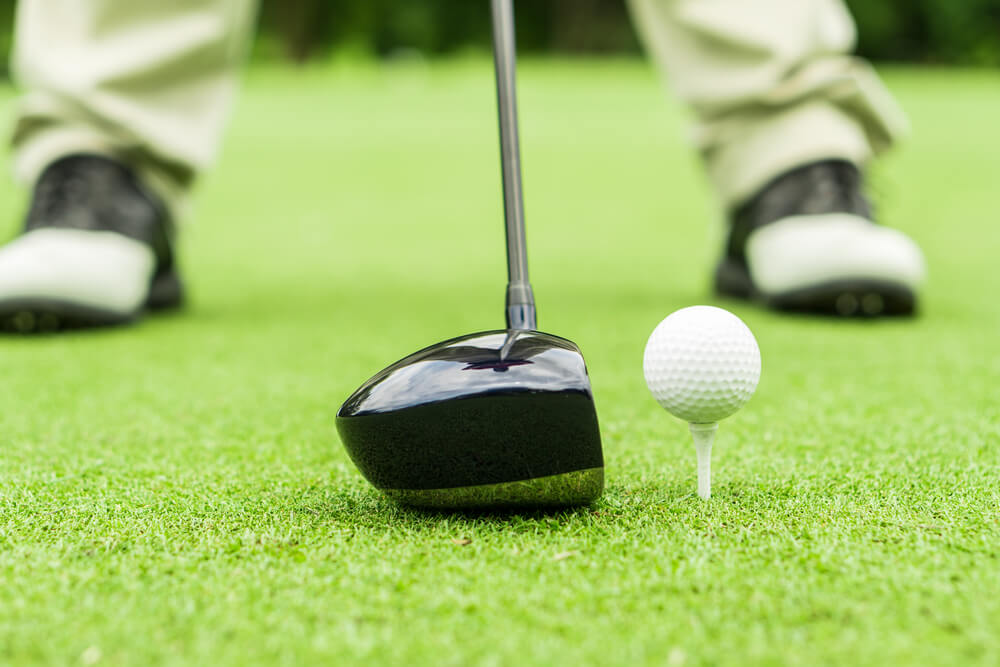
Golf is a sport that requires precision, flexibility, strength, and endurance. While many golfers focus on perfecting their swing and refining their technique, they often overlook the importance of fitness in improving their game. Fitness plays a pivotal role in enhancing performance, preventing injury, and increasing longevity on the course. However, many golfers make several mistakes when it comes to their fitness routines, which can hinder progress or even lead to setbacks. In this blog, we will discuss six common mistakes golfers make in their fitness routines and how to avoid them.
- Neglecting Flexibility and Mobility
Flexibility and mobility are essential components of a golfer’s fitness routine. Golfers often focus too much on strength training and overlook the importance of maintaining a good range of motion, particularly in the hips, shoulders, and spine. Without proper flexibility, it becomes difficult to execute an efficient swing. Restricted range of motion can cause compensations in the body, leading to poor technique and potential injury.
A lack of mobility in the hips, for example, can limit a golfer’s ability to rotate during their backswing, which directly affects the power and accuracy of the shot. Similarly, tight shoulders and spine can restrict the body’s ability to coil and uncoil smoothly.
To prevent this, golfers should incorporate stretching and mobility exercises into their routine. Dynamic stretches, foam rolling, and yoga are great ways to improve flexibility and mobility. Adding these exercises helps to maintain proper body mechanics and allows golfers to achieve a full, fluid swing.
- Overemphasizing Strength Training
Strength training is undoubtedly important for golfers, but many players mistakenly focus too much on building brute strength. Golf requires a combination of strength and explosiveness rather than raw power. When golfers overemphasize strength, they risk becoming too bulky and losing the agility required for a smooth, efficient swing.
Excessive muscle mass in the upper body, for instance, can impair a golfer’s ability to rotate freely through the swing. This limits the effectiveness of the backswing and follow-through, resulting in a loss of power and control.
Instead of focusing solely on strength, golfers should aim for functional strength—muscle groups that contribute to golf-specific movements. Exercises such as kettlebell swings, medicine ball throws, and resistance band exercises can help build strength and power while maintaining flexibility and range of motion.
Golfers should also avoid focusing too much on isolated exercises and should prioritize compound movements like squats, lunges, and deadlifts. These exercises engage multiple muscle groups, promoting overall stability, balance, and coordination—key elements for an effective golf swing.
- Ignoring Core Strength
The importance of core strength in golf cannot be overstated. The core is the foundation of your swing, providing stability and rotational power. Golfers often neglect core training or fail to target the right muscles, leading to inefficiencies in their swing and, ultimately, poor performance on the course.
Core strength is vital for maintaining posture during the swing, transferring energy from the lower body to the upper body, and controlling the clubface. Weakness in the core can result in poor posture, which in turn leads to off-center shots, loss of distance, and increased injury risk.
Golfers should integrate exercises like planks, Russian twists, and medicine ball slams into their routine to strengthen the core muscles. It’s essential to work not just the abs but the entire core, including the obliques, lower back, and glutes, to create a strong, stable base for the swing. A well-conditioned core ensures that golfers can rotate freely and efficiently, generating maximum power without compromising technique.
- Overlooking Recovery and Rest
Many golfers treat their fitness routines like a rigorous, daily workout plan and neglect the importance of rest and recovery. While it’s important to stay active, overtraining can lead to burnout, fatigue, and injury. Without proper recovery, the muscles become fatigued, and the risk of strain or overuse injuries increases.
The body requires adequate rest to repair muscles, replenish energy stores, and reduce inflammation. This is especially important for golfers who train frequently or play multiple rounds a week. Inadequate recovery can result in decreased performance, sluggishness, and increased injury risk on the course.
Rest and recovery don’t just mean taking days off from the gym; they also involve active recovery techniques such as foam rolling, stretching, massage therapy, and utilizing ice or heat packs to reduce soreness. Sleep is another crucial aspect of recovery—quality sleep allows the body to repair and regenerate. Golfers should schedule regular rest days and recovery sessions as part of their fitness routine to ensure optimal performance and reduce the risk of injury.
- Focusing on the Wrong Types of Cardio
Cardiovascular exercise is important for overall fitness and endurance, but golfers often make the mistake of focusing on the wrong types of cardio training. Long-distance running or intense cardio sessions on a treadmill, while beneficial for general health, are not always the best for golfers.
Golf requires short bursts of explosive power and endurance over long periods. Traditional forms of cardio, such as running or cycling, may not effectively simulate the physical demands of golf, where stamina and strength are key factors. Long runs may actually leave golfers fatigued, which can negatively impact their performance on the course.
Instead, golfers should focus on high-intensity interval training (HIIT) or circuit training, which better mimics the quick bursts of energy required during a round of golf. HIIT workouts, which alternate between intense activity and short recovery periods, can help build both strength and cardiovascular endurance. This approach not only helps golfers improve their fitness but also ensures they have the stamina to maintain a high level of performance throughout a full 18-hole round.
- Not Tailoring the Routine to Golf-Specific Movements
One of the biggest mistakes golfers make is not tailoring their fitness routine to the specific movements required for the sport. Golf is a unique sport that demands flexibility, rotational strength, and power in specific planes of motion. Golfers often do generic workouts that don’t focus on the distinct demands of the golf swing.
For example, squats and deadlifts are great for overall strength, but they don’t necessarily target the rotational movements needed in golf. The golf swing involves a complex sequence of movements that include rotational power, lateral stability, and upper body coordination. A generic fitness routine that doesn’t address these needs can limit a golfer’s ability to perform at their best.
Golfers should incorporate exercises that mimic the golf swing. Rotational exercises like cable wood chops, resistance band rotations, and medicine ball rotational throws help improve the twisting motion essential for generating power during the swing. Additionally, incorporating exercises that promote balance and stability, such as single-leg deadlifts and stability ball exercises, helps golfers maintain control throughout their swing and reduce the risk of injury.
Conclusion
A well-rounded fitness routine is crucial for improving golf performance and preventing injuries. By avoiding these common mistakes—neglecting flexibility, overemphasizing strength, ignoring core training, overlooking recovery, focusing on the wrong cardio, and failing to tailor routines to golf-specific movements—golfers can enhance their fitness and elevate their game.
Remember, fitness isn’t just about working harder; it’s about working smarter. A balanced approach to strength, flexibility, core training, and recovery will not only help you hit longer, more accurate shots but also ensure that you can enjoy the game for years to come. By paying attention to the details of your fitness routine and making adjustments where necessary, you’ll be well on your way to becoming a stronger, more effective golfer.





